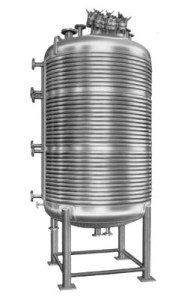Pressure Vessels | Oil & Gas Industry

Senate Committee Orders DisCos, GenCos to Subject Equipment to Testing by NEMSA
October 20, 2016
Oilfield Pipeline Management
October 20, 2016A closed container with the purpose and intention of holding / storing gases or liquids, at a pressure significantly different form the ambient pressure, is called a pressure vessel. The pressure difference is what makes working with these vessels so hazardous and has been responsible for many life threatening accidents since the start of pressure vessels. The fatality of such vessels has stipulated design, manufacture, and operation to be heavily regulated by engineering specialists backed by legislation. Finding a constant definition for this term will pose difficulty because each country has their own definition and laws pertaining to pressure containers.
Pressure vessels are intended to function safely at precise pressure and temperature settings. Both industry and private sectors allow pressure vessels to be applied and used in a variety of ways. Examples of pressure containers are:
- Diving cylinders
- Recompression chambers
- Distillation towers
- Pressure reactors
- Autoclaves
Pressure vessels are highly used within mining operations, oil refineries and petrochemical plants, nuclear reactor vessels, submarine and space ship habitats, pneumatic reservoirs, under pressure hydraulic reservoirs, road and rail vehicle air-brake reservoirs, and storage vessels for liquefied gases such as ammonia, chlorine and propane.

Due to ductile forces within the walls of pressure vessels, the container is held together in contrast to the gas pressure. Containers like this operate according to proportion – the normal stress in the container walls is proportional to the pressure and radius of the vessel and inversely proportional to the wall thickness.
Like anything in life, there is a history to the invention of pressure vessels. The industrial revolution saw the creation of enormous pressure containers, predominantly in Great Britain. The main purpose of this invention was to create boilers for producing steam in order to drive steam engines. In the early stages of pressure vessels there were incidents of fatal boiler explosions which essentially increased the standards of vessel design and testing.

